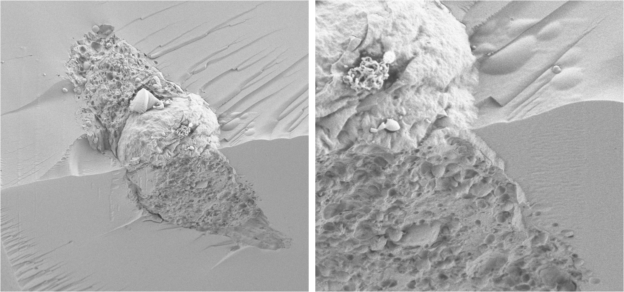We design and validate semi-synthetic hydrogels made from protein-polymer adducts for various applications, including tissue engineering, cancer drug screening, and investigational mechanobiology. These cell-compatible hydrogels are constructed from water-soluble polymeric building blocks in order to provide coordinated control over physical properties and bioactivity at a cell-material interface.
Our work is focused on the development of cell-compatible polymeric water-based biomaterials (hydrogels) that are capable of coordinating control over physical properties and bioactivity. Important new discoveries in stem cell research, cancer biology, tissue regeneration, and cellular morphogenesis are beginning to emerge from studies using these new semi-synthetic hydrogel biomaterials.
Protein-Polymer Design Concepts
Increasingly, hydrogel scaffolds are being designed as sophisticated instructive biomaterials of a biomimetic nature. A biomimetic scaffold design necessitates not only insight into how the biological building blocks in the natural ECM are arranged to function properly, it also requires technical know-how in manipulating these building blocks using man-made technologies, i.e. polymer chemistry. Accordingly, in our laboratory we develop hydrogel biomaterials from protein-polymer conjugates using naturally occurring proteins, including fibrinogen, and synthetic polymers such as poly(ethylene glycol) (PEG). We introduced a family of semi-synthetic hydrogel biomaterials premised on these conjugates, including PEG-fibrinogen, PEG-collagen, PEG-albumin, Pluronic-fibrinogen, as well as other variants. Control over structural properties, including porosity, compliance, bulk density, mechanical properties, and degradability are directed through the synthetic polymer, whereas the biological cell signaling is controlled through the incorporation of the protein component.
Many of these materials have already been extensively tested both in vitro using different cell types, and in vivo with different pre-clinical animal models. For example, the PEG-fibrinogen materials have laid the foundation for our successful exploration of stem cell morphogenesis in 3D cultures, as well as served as a test bed for developing new repair strategies for traumatic injuries or diseased tissues. Our on-going research activities continue the rational design of new and useful materials, and our experimental investigations using these new materials help us to identify biomedical applications that stand to benefit from such an approach.
Relevant Publications
Biomimetic Hydrogels for Regenerative Medicine.
Miron-Harpaz, I., Kossover, O., Ivanir, E., Seliktar, D.
eds. J.F. Mano, Wiley-VCH: John Wiley & Sons, 2012
